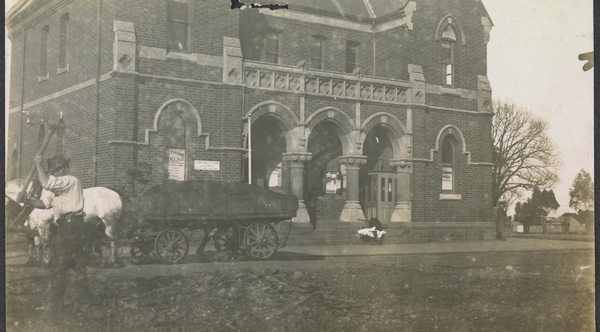Beat speaks to Kimberley Moulton, a Yorta Yorta curator and writer who is responsible for curating the exhibition. “I was asked to come on board as a curator,” says Moulton. “Uncle William’s sister Ada was my great great grandmother so it’s an incredible honour. Uncle William lived here in Footscray and it’s also an honour to be working with the Footscray Community Arts Centre and the deadly work they do.”
Call from the West is focused on Indigenous activism, and in various ways all the artists involved are activists themselves. “It’s to do with their artistic practice,” says Moulton on how the artists were chosen. “I’ve worked with them before; I’ve seen how they would represent the situation within the space. They all represent politics, activism, our ancestors and the fights they fought. These are a central part of all of their practices in many different ways. Tim Kanoa is an established artist with works focusing on photographic depictions of marches, protests and other things. Last year the forced closure of Aboriginal communities led to some big marches and Tim captured communities and people standing up for their rights. I welcomed being able to create this opportunity for him to produce work.”
There is an added significance to Call from the West for sound artist Kiah Atkinson – along with Moulton he is a proud descendant of William Cooper through their great great grandmother, Ada. “Kiah Atkinson is a young Yorta Yorta man and he is a relation of Uncle William, as am I,” says Moulton. “We both have a relationship to Uncle William. Kiah’s artistic response is a sound piece, a recording of country, from Uncle William’s country.” William Cooper was a Yorta Yorta man and travelled from his country up, crossing many different countries to settle in Footscray, which is Kulin Country.
Also involved in Call from the West are artists Arika Waulu and Paola Balla. “Waulu is a member of Warriors of the Aboriginal Resistance [who protested following the forced closure of Aboriginal communities last March],” Moulton says. “Her work is a projection documenting the history of protests – Invasion Day protests, marches protesting the treatment of Aboriginal people, protests against the removal of Aboriginal people from communities. She’s really looking at contemporary activism.
“Paola Balla has been an activist and writer for many years and her work is a 3D exhibition on the floor, looking at her grandmother who went with Uncle William to the Day of Mourning protest on the 150th anniversary of Australia.”
The Day of Mourning march took place on 26 January 1938, the sesquicentenary of British colonisation. William Cooper led the Victorian delegation of the Australian Aborigines League. The protest subsequently became a tradition and annual Days of Mourning, now including Invasion Day (on January 26), have taken place ever since.
“There is a beautiful link to Uncle William in her practice,” continues Moulton. “The focus of the work is Uncle William and also the legacy of what the old people left us, of Aboriginal people standing up for their rights and demanding reform. It’s a huge story and an introduction to William Cooper: who he was, what he did. We all know about Malcolm X, about Martin Luther King, but we don’t know about our own black leaders.”
NAIDOC week owes its origins to Cooper having established Aborigines Sunday. Another little known remarkable fact about him is that he led a delegation of the Australian Aboriginal League, walking from Footscray to the German Consulate on 6 December 1938, several weeks after Kristallnacht, to deliver a petition which condemned the “cruel persecution of the Jewish people by the Nazi government.” The German Consulate did not accept the petition. “It was the only private protest against Kristallnacht,” observes Moulton. “And he still wasn’t even a citizen of his own country at the time.”
Its tremendous significance justifies a permanent version of Call from the West. “We’d love to get a statue of Uncle William erected in Footscray,” says Moulton. “There is a statue of Pastor Doug Nicholls [Cooper’s nephew, a founding member of Federal Council for the Advancement of Aborigines and Torres Strait Islanders], in the Treasury Gardens and we’d love something similar here. We hope people come to the exhibition and go and research more. There are books out there.” For instance, Blood from a Stone – William Cooper and the Australian Aborigines League, by Andrew Markus, which was published in 1988.
BY LIZA DEZFOULI

